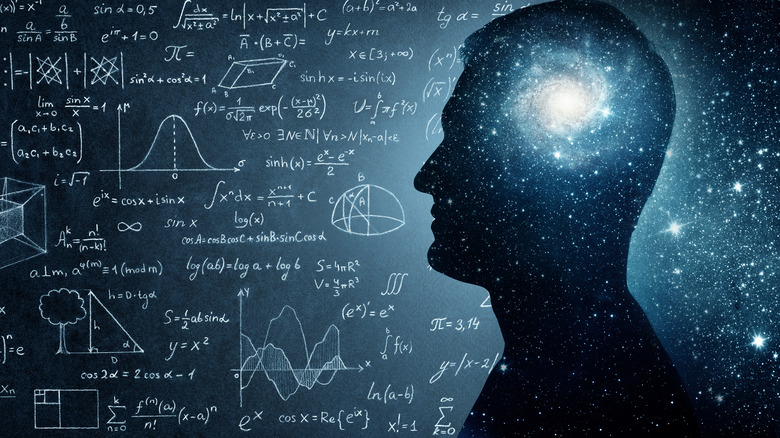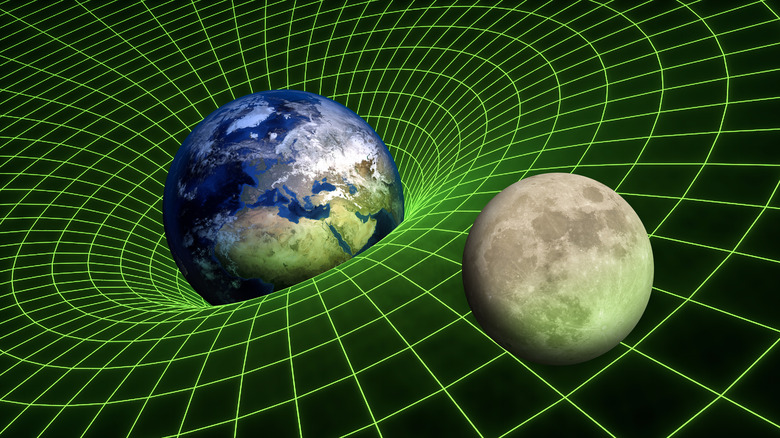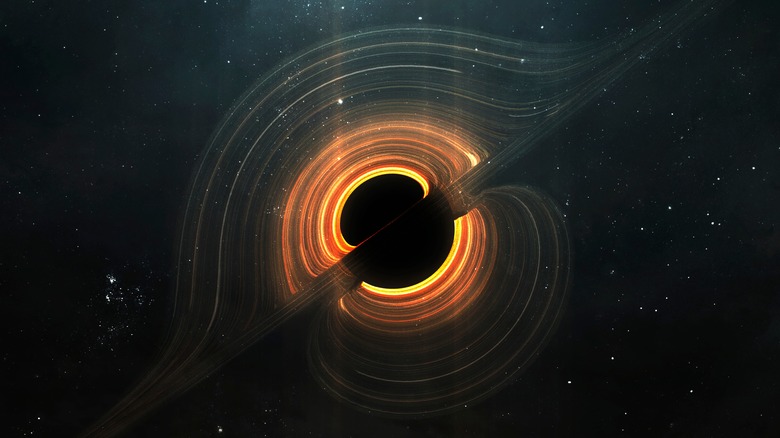Why Scientists Hunt Desperately For The Theory Of Everything
"The Theory of Everything." It's a pretty ambitious name, right? "Everything," however, doesn't include why some people prefer serrano peppers over habaneros, the biomechanics of pooping dogs, risk and reward ratios in the Prisoner's Dilemma, or the societal fallout of Stalin's death in 1953 Soviet Union. So not everything. But everything in physics? Yes indeed. Still, since we need physics to explain chemistry, chemistry to explain biology, biology to explain neuroscience, neuroscience to explain psychology, and psychology to explain sociology (as a paper published on Research Gate depicts) ... Ok, maybe a unified theory of physics would explain everything. In a way.
But as Space.com explains, when physicists talk about a Theory of Everything, they mean a theory that combines the work of Albert Einstein with subsequent physicists like Niels Bohr and Max Planck. Specifically, they mean a way to reconcile the interaction of gravity and spacetime (laid out in Einstein's 1915 Theory of General Relativity, per Space.com) with the properties of subatomic particles and waveforms in quantum theory (via Science Direct).
And what does that mean? It means fusing the rules of the very big with the rules of the very small. Right now, the macro-world of planets and galaxies seems to abide by different rules than the micro-world of atoms and the subatomic — to a degree. There has to be a way to bridge the two, and this is what the Theory of Everything is all about. In so doing, we might just explain human consciousness itself.
The gravity of the situation
At present, we've got a whole bunch of theories that explain the origins, organization, and workings of the universe. To give you an idea of how many chunks of theories, theorems, and equations there are, Tutorials Point outlines about 50 or so that relate to everything from optics to atomic physics, thermodynamics to electromagnetism, fluid dynamics to quantum mechanics, and so on. One by one, different researchers at different points researched different aspects of the natural world and came to conclusions that got grafted into our collective body of work. It's all a bit complicated, but that's how real science and data analysis works. But of course, wouldn't things be more convenient if we could squash everything into one mega-theory? Particularly seeming contradictions like general relativity and quantum mechanics?
In his 1915 theory of general relativity, Albert Einstein figured out a piece of the puzzle so big that we've been contending with its gravity (bonus points for a superb double entendre) ever since. Ten years earlier in 1905, Einstein had concluded in his theory of special relativity that space and time were one, woven fabric, i.e., spacetime, per Space.com. This is what we mean when we say that time is the fourth dimension of space. As Space.com explains, general relativity addresses how objects of greater mass, like the Earth, the sun, or a black hole, dent spacetime like dimples in a taut bedsheet. Everything, including the pathway of light, gets bent around them. This is what causes gravity.
A spooky quantum realm
Albert Einstein, in other words, believed that space was local. Cause and effect happen in close physical proximity to each other, like the way a cup falls on the floor when a cat pushes it off a table. Gravity affects objects that get close, and that's that. Within five or so years of Einstein publishing his theory of general relativity, however, research into quantum mechanics — the underlying physics that governs very tiny objects — took off. And so began a split in physics that leads all the way to the 2022's Nobel Prize winners and the current search for the Theory of Everything, as The Conversation overviews.
Starting with scientists like Niels Bohr and Max Planck in the 1920s, research into quantum mechanics revealed a lot of completely bizarre-o, wackadoodle things that happen when we go subatomic. In the present day, Scientific American outlines some of these phenomena, chief of which is non-local effects. Quantum particles seemed to affect each other non-locally, over any distance at all, and are completely random and unknown until measured. Einstein thought this was absurd, and wrote about such "spooky action at a distance" in 1935, readable in Physics Review Journal Archive. But as it turns out, Einstein was wrong and quantum effects do happen at distances beyond the reach of local forces like gravity. And in 2022, as Nature discusses, John Clauser, Anton Zeilinger, and Alain Aspect shared the Nobel Prize in Physics for demonstrating as much.
The Hawking connection
So how do we reconcile the physics of the big with the small? How do we merge Albert Einstein's research into gravity with ongoing developments regarding quantum theory, and account for both of them in one, single Theory of Everything? Interestingly, black holes provide us with our first clue or breadcrumb in the right direction. Einstein speculated on the existence of black holes as early as 1916. But as Space.com tells us, it took all the way until 1964 for researchers to glimpse them in reality. From there, we've got one of modernity's most renowned and loved public figures of science to thank for bringing us closer to a Theory of Everything: Stephen Hawking, as Forbes outlines.
As Stephen Hawking discovered, black holes evaporate over time. As early as 1974 Hawking described how a black hole's mass and its temperature are inverse — the smaller a black hole, the cooler it is, as Science Alert explains. This could only happen if a black hole emitted radiation, i.e., lost particles and mass. Such lost particles have come to be called Hawking radiation. But this is impossible, non-quantum physics would state, because a black hole's gravity is too strong. But it's not impossible if we take quantum mechanics into account, where a black hole loses particles non-locally, anywhere in the cosmos. This also concurs with the first law of thermodynamics — energy can neither be created nor destroyed — and brings us closer to a Theory of Everything.
Our place in the cosmos
At this point, some folks are bound to say, "Yeah, who cares? None of this affects my daily life." To this we say: If our ancestors only concerned themselves with plain and apparent outcomes, we'd still all be hunter-foragers. The desire to find and define a Theory of Everything goes hand in hand with the overall human desire to reach, strive, learn, grow, know, etc. And yes, the title "Theory of Everything" is certainly grandiose enough to inspire researchers for a variety of reasons in and of itself.
On that point, there are numerous lines of inquiry that scientists are pursuing in order to develop a unified theory of all physics. New Scientist has a list of potential candidates for a Theory of Everything, each with a name more impressively verbose than the last: causal dynamical triangulations (CDT), loop quantum gravity, internal relativity, E8 (an eight-dimensional mathematical pattern), and more. Different teams are researching each theory, but in the end, each theory attempts to develop an underlying framework that accounts for all current physical theories and unites all disparate points. Or as one article on Science Direct says, a Theory of Everything would populate Einstein's "sterile theory of spacetime" with living content.
Big Think and others go one step further and posit a link between human consciousness — we creatures making observations — and the underlying quantum mechanics of the universe. If true, that would definitely merit being called a Theory of Everything.




